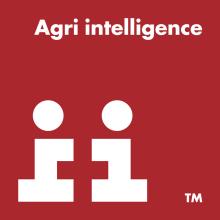As part of CFE's Countryside COP 2022 week of events highlighting how the rural community can drive towards Net Zero, we were pleased to host a YEN Zero Workshop on Tuesday 11th October 9-11am exploring how productivity can help create the opportunity to spare land for carbon and nature.
We were joinied by Professor of Conservation Science at Cambridge University, Andrew Balmford. Andrew has long advocated the need for agriculturalists and conservationists to collaborate to optimise benefits for nature. His work has shown that 'sparing' land by concentrating high yield production gives better outcomes for nature and climate than 'sharing' land through low input / low output agriculture. His thinking led to the 'three compartment model' advocated in Henry Dimbleby's National Food Strategy and subsequently being developed as a Land Use Framework. We were fortunate to also be joined by Dustin Benton from Green Alliance to discuss what a Land Use Framework could look like, based on their recent "Land of Opportunity" report.
Link to the Remo online event here
The workshop was open to everybody, from growers looking to adapt their production systems to reduce their carbon footprints, through to food and drinks manufacturers seeking to understand how they can reduce emissions throughout their supply chains. You didn't need to be a member of the YEN Zero network to attend. We've posted questions from the event in the comments below - please give your answers & responses.
In breakout groups of up to 8 we discussed three questions:
1) How should the most appropriate use of land be determined?
- What factors determine how land is currently being used?
- What tools/knowledge/support are available to help farmers know what is the most appropriate land use?
- What metrics can be used to define the most appropriate use of land?
2) How to ensure that farms are fairly rewarded for managing land for different purposes?
- How should the best use of land should be incentivised?
- How can sustainable intensification be defined?
- What risks are there for adopting ‘agroecology’ or sparing land for environmental projects? What support is required to manage those risks?
3) At what scale should decisions about land use be taken?
- Example scales: In-field, field, farm, landscape
- Is it practical to be managing for multiple land uses on the same farm?
- Which farm-level factors determine the practicality of the three-component model of land use? (e.g. farm size, type, farm location)
Points from the Table Discussions are summarised below:
- Appropriate scale is important
- Farms can make decisions on field by field basis as all farms have good fields and poor fields - but do these correspond to where nature and carbon benefits can be maximised?
- Yield maps are useful tools for deciding land use - could we get maps of yield potential at landscape scale?
- the largest wildlife benefits from land sparing come from connecting large areas of land, not taking out odd corners or small fields
- Some farms and geographic areas are higher yielding than others - can we match yield improvements on one holding with land spared at another location, where productivity is lower?
- is there a conceivable market or policy mechanism to support this?
- Carbon matters at a global scale, but biodiversity benefits are much more localised. Need connecting policies across borders.
- Incentives will be important
- General feeling that current rewards on offer from ELMS and landscape recovery schemes are not high enough to be attractive
- current high crop prices (eg over £250/t for wheat) don't aid decisions to remove land from production (though high input prices counteract this) but do stimulate aiming for higher yields
- If land is going to be out of production for a period of time the farmer needs to be rewarded, with rates of return tracking markets.
- Who is rewarding - government, supply chain, external finance?
- how can tenant farmers make long-term decisions?
- Changes need to be focussed on less productive areas
- Does the current countryside stewardship scheme encourage the best use of land?
- Land management into larger areas may make a bigger difference than combining smaller areas together. Are there any other models around the world that could be adopted?
- Need to not be divisive with the debate
- its not an "either / or" - there is room for nature sensitive farming, productive farming & reversion to nature.
- Public perception that ‘intensification’ is undesirable?
- Sceptism in industry that going for high yield is desirable - feeling that lowered inputs everywhere (eg regen ag) is closer to the current zeitgeist.
- Does the industry accept that to reach Net Zero a sizeable portion of land will need to come out of production?
- Enhancing our agricultural soils and increasing soil C is important to sustain our cropping landscape and maintain/increase yields - this also needs to be incentivised
- Can we quantify the potential carbon savings from best practices in building soil C and reducing inputs (eg regenerative agriculture approaches) in relation to benefits from spared land? what yield increase and land sparing would be required to match the best of regen ag?
- How can any benefits from high yield with land sparing be represented in metrics like GHG intensities per tonne?
- To tackle climate change hard decisions need to be made but history and tradition should be protected
- Weather, rotation, tenancy, tradition, and people need to be considered when decisions are made
VIEW A SUMMARY REPORT OF THE EVENT HERE
Feel free to add or discuss anything missing or mistaken in the comments boxes below.
YEN Zero calculates and benchmarks combinable and forage crop carbon footprints. We are proud to be supported by 11 organisations from across the agriculture industry. We have both sponsored and independent entry spaces available for growers to join today. Sign up to YEN Zero via the YEN website now
















Discussion
Question for Andrew - From your research, which model is best for helping us achieve net zero? And how does regenerative agriculture fit into this?
With the land sparing model, is there a risk of creating isolated habitats that aren't connected?
Question to Dustin - Won't a large proportion of those 'unprofitable' farms be swallowed up by the profitable ones? As they'll have the financial capacity to take on less valuable land?
It entirely depends on policy design. An ELM drawing on a land use framework as outlined in Land of opportunity would make it financially viable for small, unprofitable farms to be profitable without any consolidation, if they took up landscape recovery funding. If the policy was designed to achieve nature and climate outcomes at lower cost, this could be achieved through consolidation - but there is a social question (do we want to retain existing land tenure, or to spend less on farm payments for the same outcome) that is implicit here. Green Alliance has assumed a social preference for retaining all existing farmers on their existing holdings.
Two questions - on land sparing how can you aggregate smaller individual farms together given separate ownerships? And with the focus on the highly productive areas of land, what about the food miles?
Food miles are typically a very small fraction of the total environmental footprint of food - the only exception is air-freighted food. On farm aggregation, co-operatives are typically the means by which farmers agree to govern common resources/have power over supply chains. They are atypical in the UK, compared to other parts of Europe, however, and other legal approaches are possible!
With such outdated data on land quality and soils across the UK, do you think it's perhaps dangerous to develop a paper based land framework risking not appreciating what happens in practice?
The data used to develop the analysis supporting 3 compartment isn't based on soil quality directly so I don't think the risk you raise is relevant: the ALC surveys are rather old! Instead, it's based on ecological survey data which is typically not more than a decade old, and on (physical) farm-level food production data from 2019, and on economic data from farming, also from 2019. The analysis could be rerun annually, in principle, though it'd require access to confidential data that only Defra and equivalent bodies in devolved nations have.
Question from Ian Smith:
How would you rate the ELS/HLS land use for non productive agriculture for the past 20 years on species recovery in England ?
Question from Mark Dewes:
How can we apply some equivalence between different agricultural outputs using the impact per tonne metric? Eg 1 tonne of milling wheat contributes more to food security than 1 tonne of feed wheat
Question from Nick Wilson:
If we require as much land abroad now as we require at home to satisfy demand for food, how does land sparing or sharing in the UK help global emmissions/nature diversity. Isn't this a very self-centred view?
When comparing 2 systems with different yield levels, how should we calculate the carbon opportunity cost from the lower yielding system that requires more land?
In terms of practically judging on farm any areas which might be worthwhile taking out of production, the CEH E-Planner tool developed from the ASSIST project may be useful - https://e-planner.ceh.ac.uk/